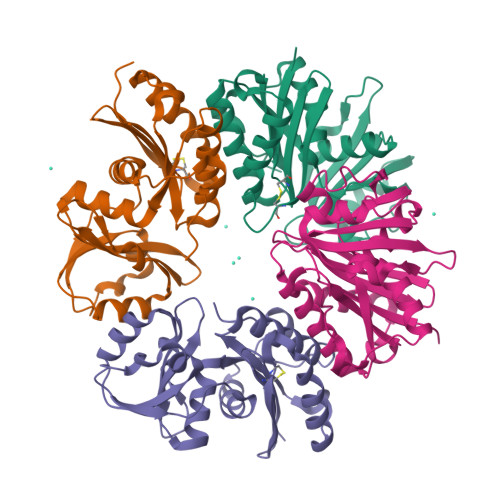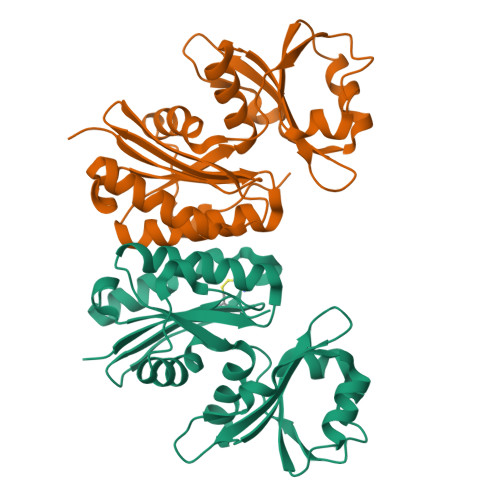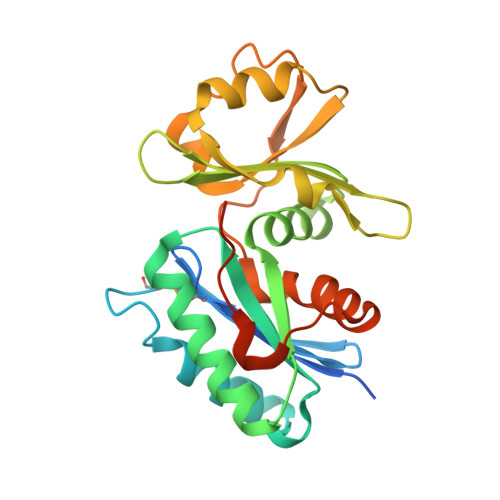A Complement to the Modern Crystallographer'S Toolbox: Caged Gadolinium Complexes with Versatile Binding Modes.
Stelter, M., Molina, R., Jeudy, S., Kahn, R., Abergel, C., Hermoso, J.A.(2014) Acta Crystallogr D Biol Crystallogr 70: 1506
- PubMed: 24914962
- DOI: https://doi.org/10.1107/S1399004714005483
- Primary Citation of Related Structures:
1OKJ - PubMed Abstract:
A set of seven caged gadolinium complexes were used as vectors for introducing the chelated Gd(3+) ion into protein crystals in order to provide strong anomalous scattering for de novo phasing. The complexes contained multidentate ligand molecules with different functional groups to provide a panel of possible interactions with the protein. An exhaustive crystallographic analysis showed them to be nondisruptive to the diffraction quality of the prepared derivative crystals, and as many as 50% of the derivatives allowed the determination of accurate phases, leading to high-quality experimental electron-density maps. At least two successful derivatives were identified for all tested proteins. Structure refinement showed that the complexes bind to the protein surface or solvent-accessible cavities, involving hydrogen bonds, electrostatic and CH-π interactions, explaining their versatile binding modes. Their high phasing power, complementary binding modes and ease of use make them highly suitable as a heavy-atom screen for high-throughput de novo structure determination, in combination with the SAD method. They can also provide a reliable tool for the development of new methods such as serial femtosecond crystallography.
Organizational Affiliation:
University Grenoble Alpes, Institut de Biologie Structurale (IBS), Grenoble, France.


















